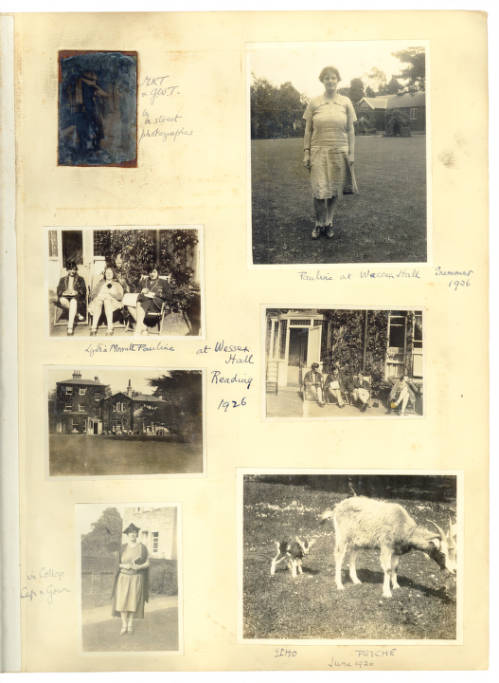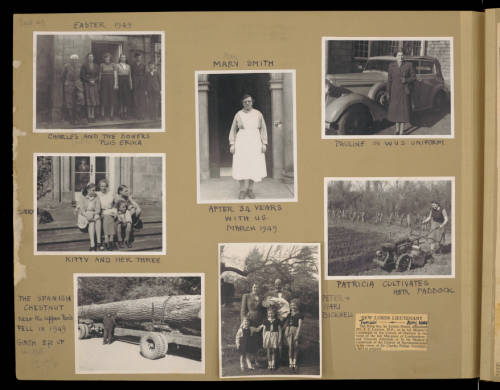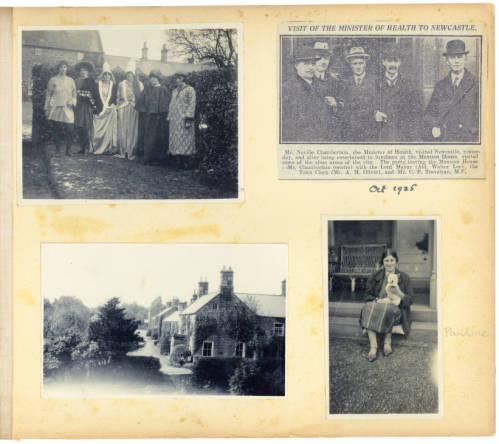Pauline Jermyn Trevelyan (1816 – 1866)
Early British photographer, artist and patron
An art patron and collector of early photography, Pauline Jermyn Trevelyan (1816-1866) started her own photographic work creating sketches using a camera lucida while travelling Europe with her husband, an aristocrat geologist and botanist.
A camera lucida is an optical device for drawing which projects a superimposition of the subject being viewed onto the drawing surface. Some of Pauline’s camera lucida drawings can be found in the British Museum, and one of her paintings is in the National Portrait Gallery.
Pauline was fascinated by scientific invention and by 1840 was studying chemical and optical principles and the daguerreotype process, leading to her working with calotypes from 1844. Calotype was an early photographic process introduced in 1841 by family friend William Henry Fox Talbot, which created a negative which enabled duplication, unlike the earlier daguerreotype process which produced a single copy.
Pauline was experimenting at the time of the first publication of Anna Atkins’ work ‘Photographs of British Algae: Cyanotype Impressions’ (1844-1845) and was given a calotype camera on her birthday, 25 January, in 1845, which was the anniversary of Talbot’s invention of photography. Talbot’s wife, Constance Fox Talbot (1811–1880), considered the first woman to take a photograph, was one of Pauline’s contemporaries and together, these women can be said to have helped pioneer the field for Julia Margaret Cameron (1815-1879) who took her first portraits in 1863.
Patrons to the Pre-Raphaelites Millais, Rossetti, Hughes and Woolner (who decorated the Trevelyan family estate Wallington Hall in Northumberland), as well a longtime friend of writer John Ruskin, Pauline and her husband were also keen collectors of early photography and photogenic drawing, buying the work of David Octavius Hill, Robert Adamson, Thomas Davidson and James Howie, among others. Eight of Fox Talbot’s early photographs from the Trevelyan collection are held at the National Media Museum, Bradford.
Pauline’s lesser known own photographic work reflected her individual aesthetic and her diaries provide a unique perspective on the first years of photography and its proponents. In her diaries of spring 1845 she refers to her calotype portraits and landscapes of Kenilworth and Nettlecombe and others made on trips to Spain and Portugal. Sadly, few of Pauline’s photographs survive, but one of her calotypes ‘Part of Quadrangle, Leicester Hospital, Warwick’ appears in a diary entry of her husband’s from 29th March 1845.
Her diaries are held at the Kenneth Spencer Research Library, University of Kansas and in the Trevelyan Family Papers at the Robinson Library, Newcastle University.
Pauline suffered from ovarian cancer for many years and died at the age of 50 in 1866, during a trip to Switzerland with John Ruskin. She is buried in Neuchâtel.
By Paula Vellet














